

How To Use Dialogue Mapping To Drive Workshops (PODCAST) — WorkshopBank - Team Building Activities for Facilitators. In Session 5 of The WorkshopBank Podcast, I’m talking to Paul Culmsee who is one of only four fully qualified dialogue mappers in the world.
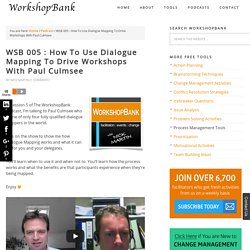
He’s on the show to show me how Dialogue Mapping works and what it can do for you and your delegates. You’ll learn when to use it and when not to. You’ll learn how the process works and what the benefits are that participants experience when they’re being mapped. Enjoy And here’s a live demo of Paul and I solving one of the worlds most talked about wicked problems… In this podcast session you’ll learn: Learn from one of only four Dialogue Mappers in the world what Dialogue Mapping is and what it can do for you and your delegatesLearn when to use Dialogue Mapping and when not to (hint: it looks like a MindMap but it’s also completely different according to Paul!)
Links mentioned in this podcast: Thanks very much Paul, for coming on the show. Comprehensive step-by-step Guide to Experience Maps Journey Maps Blueprints Empathy Maps: Print - DCC. Note: we expect this title to begin shipping the final week of February.
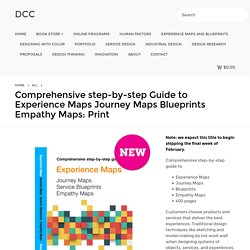
Comprehensive step-by-step guide to Experience MapsJourney MapsBlueprintsEmpathy Maps400 pages Customers choose products and services that deliver the best experiences. Traditional design techniques like sketching and model making do not work well when designing systems of objects, services, and experiences. Perhaps the most powerful new methods available for designers and managers are the group of techniques collectively known as experience maps. Through applying these methods, designers and organizations can create a holistic user experience by uncovering precisely where to focus efforts to deliver a more compelling and valuable experience. Benefits of the techniques: Mapping Methods for design and strategy: Print Edition - DCC. Mapping methods are used by teams to develop strategy to assist a wide variety of activities.
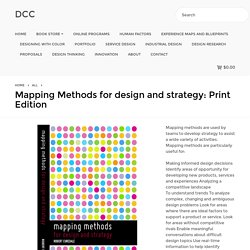
Mapping methods are particularly useful for: Making informed design decisionsIdentify areas of opportunity for developing new products, services and experiences Analyzing a competitive landscapeTo understand trends To analyze complex, changing and ambiguous design problems Look for areas where there are ideal factors to support a product or service. Look for areas without competitive rivals Enable meaningful conversations about difficult design topics Use real-time information to help identify potential problems and make the best decisions Create design that has a better return on investment Understand your customer's perspectivesCreate more successful design. How To Use Dialogue Mapping To Drive Workshops (PODCAST) — WorkshopBank. Who. Principal Issue Mapping and Dialogue Mapping Instructor Dr.
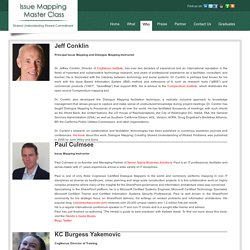
Jeffrey Conklin, Director of CogNexus Institute, has over two decades of experience and an international reputation in the fields of hypertext and collaborative technology research, and years of professional experience as a facilitator, consultant, and teacher. He is fascinated with the interplay between technology and social systems. Dr. Conklin is perhaps best known for his work with the Issue Based Information System (IBIS) method and extensions of it, such as research tools (“gIBIS”) and commercial products (“CM/1″, “QuestMap”) that support IBIS. Dr. Dr. Dialogue Mapping. The icons represent the basic elements of the Dialogue Mapping™ grammar (called IBIS): Questions, Ideas, Pros and Cons.

This is a very simple map, meant to convey the basics of IBIS. In real meetings and projects the maps are much larger, more complex, and can be nested deeply. Here's an example of some larger maps from a 2-day strategic planning meeting: This combination of (i) a shared hypertext display, (ii) a trained facilitator, and (iii) a conversational grammar is Dialogue Mapping™. (For a detailed narrative of a Dialogue Mapping™ session, see "The Dialogue Mapping™ Experience".) In Dialogue Mapping™, as the conversation unfolds and the map grows, each person can see a summary of the meeting discussion so far. Some Benefits of Dialogue Mapping™ include: Each participant's contribution is heard and acknowledged in the map. Each participant can see how their comments relate to others. The shared display map shifts the dynamic of the group into a collaborative mode ...
Tour. Y-Worlds Models. About Metamaps.cc Nov 29, 2014 Metamaps.cc is a free and open source web platform that supports real-time sense-making and distributed collaboration between individuals, communities and organizations.
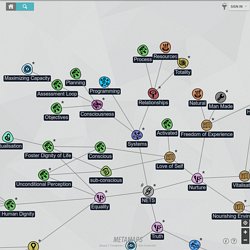
Using an intuitive graph-based interface, Metamaps.cc helps map out networks of people, ideas, resources, stories, experiences, conversations and much more. The platform is evolving for a range of applications amidst a growing network of designers, developers, facilitators, practitioners, entrepreneurs, and artists. Metamaps.cc is created and maintained by a distributed community of contributors passionate about the evolution of collaboration, alternative forms of value creation and increase of collective intelligence through the lens of the open culture and the peer-to-peer revolution.
Metamaps.cc is an initiative of affiliates of the Metamaps Open Value Network, an evolving network of peers working together to create shared value. ACTIVE PEERS (as of 11/2014) System Icons Metacodes: Hosting.